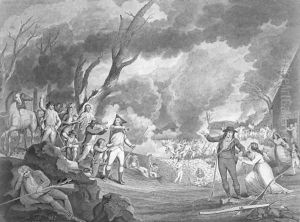Tisdale, Elkanah Paintings
Elkanah Tisdale was an American artist, engraver, and cartographer born in Lebanon, Connecticut in 1771. While not as widely known as some of his contemporaries, Tisdale made notable contributions to the early American visual and political culture. His work is characterized by its detailed craftsmanship and the variety of subjects he engaged with.
In his early years, Tisdale apprenticed with an engraver, which was a common way for artists to learn their trade at the time. He moved to New York City in the early 1790s, where he became part of a community of artisans and engravers. His skill set was diverse, and his work included miniature portraits, historical scenes, and political cartoons, as well as maps and technical engravings.
One of Tisdale's most recognized contributions is his political cartoon 'The Gerry-Mander', published in the Boston Gazette in 1812. The cartoon illustrated a district in Massachusetts redrawn for political advantage by the Democratic-Republican Party, and it was the first to depict what has since become known as gerrymandering. The term itself is a portmanteau of 'Gerry', after Governor Elbridge Gerry, whose administration was responsible for the redistricting, and 'salamander', which the shape of the district was said to resemble.
In addition to his political work, Tisdale was known for his portraits. At a time before photography, miniature portraits were a popular way to capture the likeness of loved ones, and Tisdale's skill in this area was highly sought after. His precise line work and attention to detail made his portraits cherished keepsakes for the American elite.
Elkanah Tisdale's work provides historians with valuable insights into the political and social world of early America. His engravings and maps are a testament to the craftsmanship and aesthetic sensibilities of the period. Despite not gaining the same level of fame as some of his peers, his contributions to American art, particularly in the realm of political cartoons, have earned him a place in the history of American visual culture. Tisdale died in 1835, leaving behind a legacy of artistic works that continue to be studied and appreciated for their historical significance.
